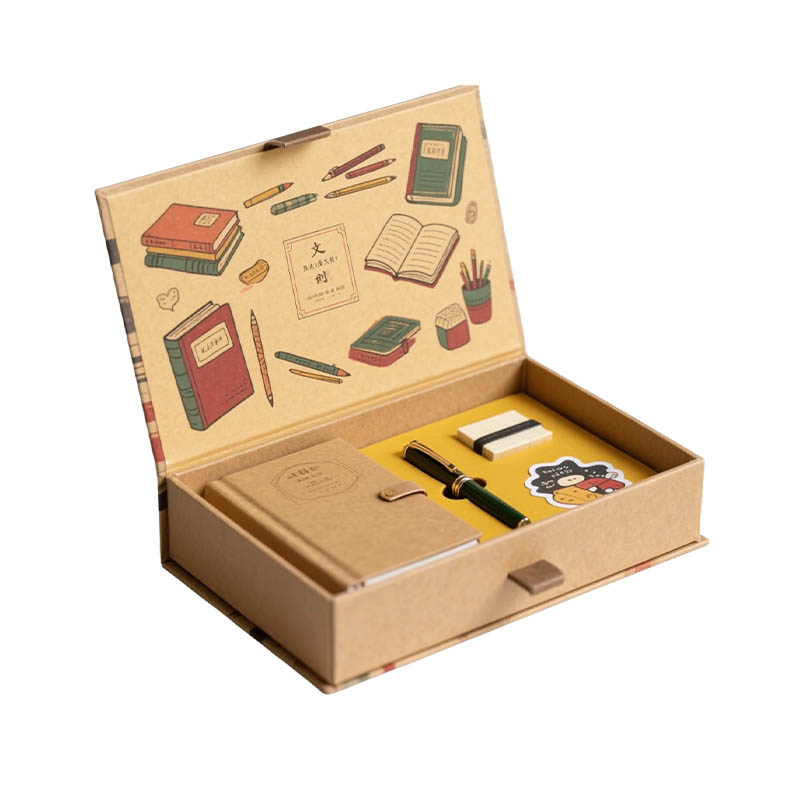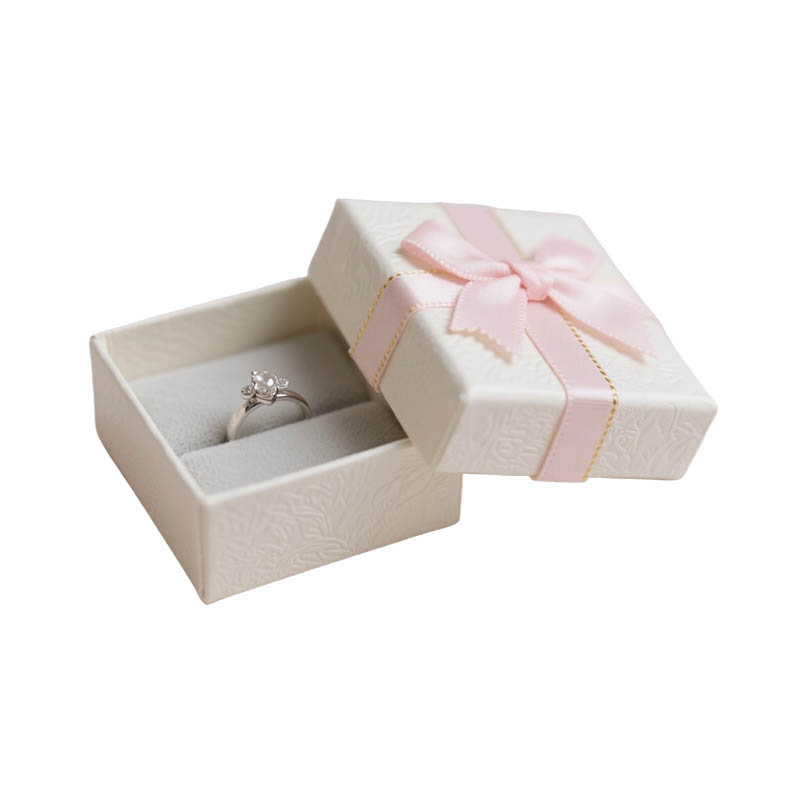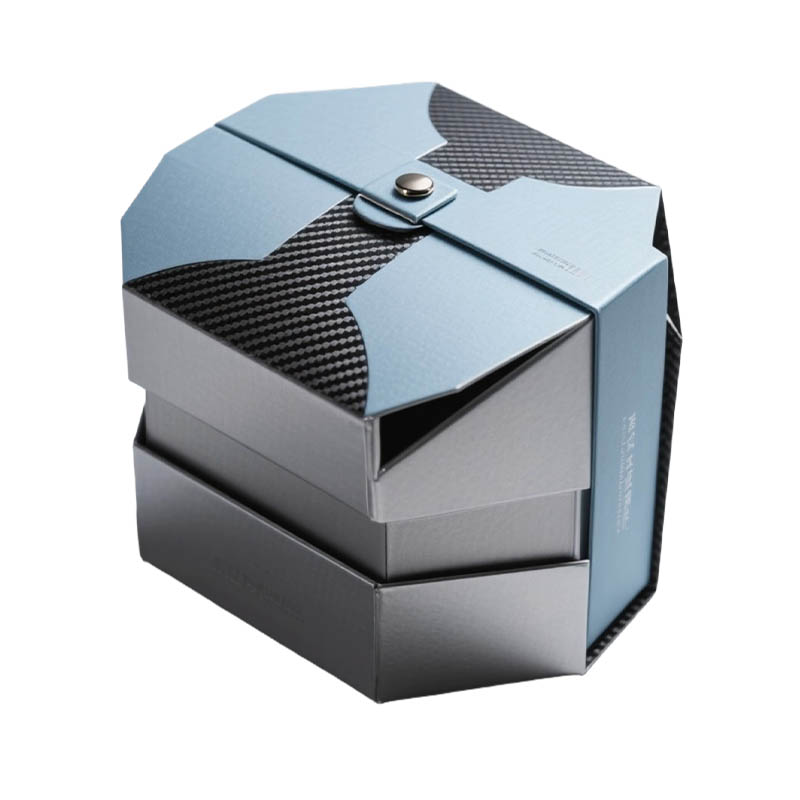How does the pull-out box reshape the product packaging experience with its ingenious structure and sense of ritual?
Release Time : 2025-11-20
On shelves overflowing with goods, packaging has long transcended its simple protective function, becoming the first point of contact for brands to establish an emotional connection with consumers. The pull-out box—a packaging format that blends a drawer-like structure with exquisite details—is subtly changing the way people interact with products through its smooth operation, layered opening logic, and highly malleable visual presentation. It doesn't rely on dazzling colors to grab attention, but rather conveys quality, suspense, and respect silently with an elegant rhythm of "pulling and revealing."
The core charm of the pull-out box stems from its unique structural philosophy. The outer box is like a tranquil container, while the inner box is embedded within like a treasure chest, guided gently by a thin pull strap or groove. This "gradual reveal" design naturally creates a sense of anticipation and ritual—the product isn't revealed all at once, but gradually unfolds as it slides out, like a stage curtain slowly being drawn back. Every pull is smooth and effortless, thanks to precise dimensional fitting and a smooth inner wall finish. There's no jamming or looseness, just the right amount of feel.
Materials and craftsmanship give it a rich sensory experience. The outer box often uses high-grammage art paper, specialty textured paper, or recycled environmentally friendly cardboard. The surface can be finished with hot stamping, embossing, screen printing, or spot UV coating, resulting in a warm touch and a sophisticated look. The inner box, depending on the contents, uses flocking, silk, EVA foam, or molded pulp trays for secondary cushioning, ensuring valuables remain securely centered. The pull straps can be made of cotton or linen webbing, satin ribbon, or paper rope in the same color as the box, serving both practical and decorative purposes. The overall structure eliminates exposed glue and plastic clips, embodying minimalist aesthetics and sustainability.
Function and aesthetics achieve a delicate balance here. The pull-out design not only enhances the unboxing experience but also optimizes internal space utilization. Multiple inner boxes can be arranged sequentially to hold the main unit, accessories, instruction manual, and gifts, ensuring clear logic and orderly access. For jewelry, watches, and high-end cosmetics, this layered display emphasizes the product's exclusivity. For tea, aromatherapy, or cultural and creative products, the combination of inner box designs and fragrances creates an immersive sensory journey. Even first-time users can operate intuitively without needing instructions.
Environmental awareness is also integrated into the design. Mainstream pull-out boxes use a single paper material system for easy recycling; the inks are plant-based or water-based, leaving no odor residue; some brands even design reusable storage boxes—drawers can store jewelry, stationery, or electronic accessories, extending the packaging's lifespan and reducing one-time waste. This shift from "use-and-discard" to "use-and-be-useful" resonates with contemporary consumers' pursuit of responsible consumption.
Applications have long transcended the realm of luxury goods. High-end electronics use it to showcase the fusion of technology and humanity; specialty coffee brands use it to tell the story of origin and roasting; wedding gift boxes use a double-drawer structure to separately package wedding rings and vow cards; even pharmaceutical and health products adopt this format, storing medicines and usage instructions separately, balancing safety and user experience. The pull-out box is no longer just a container, but a carrier of brand narrative and a medium for emotional transmission.
Ultimately, the value of the pull-out box lies not only in "holding items," but also in its ingenious structure, warm touch, and rhythmic beauty, reconstructing a slower, more interactive ritual in a fast-paced era. When a fingertip gently pulls, the inner box slowly emerges; that moment of pause and contemplation becomes the gentlest dialogue between the brand and the user. In today's experience economy and green consumption, high-performance pull-out packaging continues to define new standards for high-end product interaction with its elegance, practicality, and responsibility—making every opening memorable.
The core charm of the pull-out box stems from its unique structural philosophy. The outer box is like a tranquil container, while the inner box is embedded within like a treasure chest, guided gently by a thin pull strap or groove. This "gradual reveal" design naturally creates a sense of anticipation and ritual—the product isn't revealed all at once, but gradually unfolds as it slides out, like a stage curtain slowly being drawn back. Every pull is smooth and effortless, thanks to precise dimensional fitting and a smooth inner wall finish. There's no jamming or looseness, just the right amount of feel.
Materials and craftsmanship give it a rich sensory experience. The outer box often uses high-grammage art paper, specialty textured paper, or recycled environmentally friendly cardboard. The surface can be finished with hot stamping, embossing, screen printing, or spot UV coating, resulting in a warm touch and a sophisticated look. The inner box, depending on the contents, uses flocking, silk, EVA foam, or molded pulp trays for secondary cushioning, ensuring valuables remain securely centered. The pull straps can be made of cotton or linen webbing, satin ribbon, or paper rope in the same color as the box, serving both practical and decorative purposes. The overall structure eliminates exposed glue and plastic clips, embodying minimalist aesthetics and sustainability.
Function and aesthetics achieve a delicate balance here. The pull-out design not only enhances the unboxing experience but also optimizes internal space utilization. Multiple inner boxes can be arranged sequentially to hold the main unit, accessories, instruction manual, and gifts, ensuring clear logic and orderly access. For jewelry, watches, and high-end cosmetics, this layered display emphasizes the product's exclusivity. For tea, aromatherapy, or cultural and creative products, the combination of inner box designs and fragrances creates an immersive sensory journey. Even first-time users can operate intuitively without needing instructions.
Environmental awareness is also integrated into the design. Mainstream pull-out boxes use a single paper material system for easy recycling; the inks are plant-based or water-based, leaving no odor residue; some brands even design reusable storage boxes—drawers can store jewelry, stationery, or electronic accessories, extending the packaging's lifespan and reducing one-time waste. This shift from "use-and-discard" to "use-and-be-useful" resonates with contemporary consumers' pursuit of responsible consumption.
Applications have long transcended the realm of luxury goods. High-end electronics use it to showcase the fusion of technology and humanity; specialty coffee brands use it to tell the story of origin and roasting; wedding gift boxes use a double-drawer structure to separately package wedding rings and vow cards; even pharmaceutical and health products adopt this format, storing medicines and usage instructions separately, balancing safety and user experience. The pull-out box is no longer just a container, but a carrier of brand narrative and a medium for emotional transmission.
Ultimately, the value of the pull-out box lies not only in "holding items," but also in its ingenious structure, warm touch, and rhythmic beauty, reconstructing a slower, more interactive ritual in a fast-paced era. When a fingertip gently pulls, the inner box slowly emerges; that moment of pause and contemplation becomes the gentlest dialogue between the brand and the user. In today's experience economy and green consumption, high-performance pull-out packaging continues to define new standards for high-end product interaction with its elegance, practicality, and responsibility—making every opening memorable.







